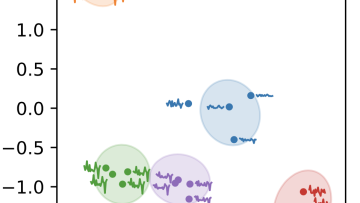12:00
Weak continuity of isometric embeddings and interaction with fluid dynamics / Finite-time degeneration for Teichmüller harmonic map flow
Abstract
The second fundamental form of an embedded manifold must satisfy a set of constraint equations known as the Gauß-Codazzi equations. Since work of Chen-Slemrod-Wang, these equations are known to satisfy a particular div-curl structure: under suitable L^p bound on the second fundamental form, the curvatures are weakly continuous. In this talk we explore generalisations of this original result under weaker assumptions. We show how techniques from fluid dynamics can yield interesting insight into the weak continuity properties of isometric embeddings.
/
Teichmüller harmonic map flow is a geometric flow designed to evolve combinations of maps and metrics on a surface into minimal surfaces in a Riemannian manifold. I will introduce the flow and describe known existence results, and discuss recent joint work with M. Rupflin that demonstrates how singularities can develop in the metric component in finite time.



